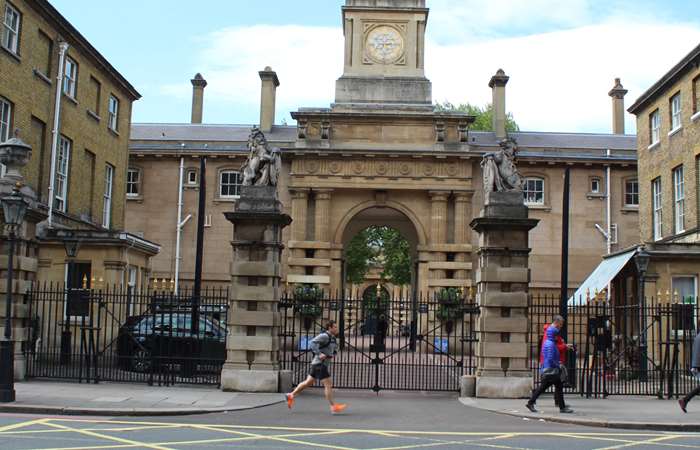
From The Horse-World of London by William John Gordon (1893)
In the horse-world of London, the highest circle, the most exclusive set, so to speak, is that housed at Buckingham Palace. To many loyal subjects the Queen’s (Queen Victoria) horses are as much an object of interest as the regalia; and as cards of admission are freely granted by the Master of the Horse, the Royal Mews (above) are probably the best known stables within the bills of mortality.
There are in them from ninety to a hundred horses —state horses; harness horses, coach and light; riding horses, and what not—whose forage bill runs into 30 quarters of corn, 3£ loads of hay, and 3£ loads of straw a week. Immediately to the right of the entrance gate is a stable for ten horses, mostly light and used in ordinary work; to the left is a similar stable similarly occupied. On the east side of the quadrangle are the coaches, state and semi-state, and, among others, the Jubilee landau. On the west side are more horses— sixteen or twenty of them. The state stables for the creams and blacks are on the north side, and to the left of them are housed the thirty-two splendid bays, many of them bred at the Queen’s stud farm at Hampton Court; the rest bought from the dealers at prices ranging from 180L to 200L. Stables there are in London of more aggressive architectural features, and some in which there is a far greater show of the very latest improvements; but there are none more well-to-do looking, none in which the occupants seem more at home. Comfort and order are everywhere apparent; the grooming is, of course, perfection; and there does not even appear to be a straw out of place in the litter.
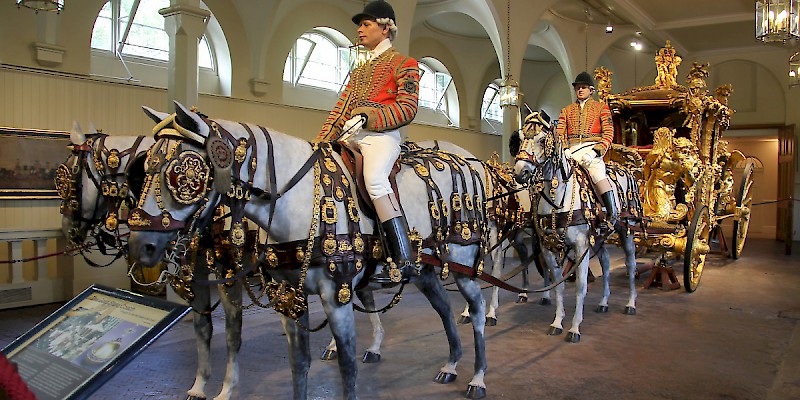
The Queen has her favourites, and in matters of horseflesh is content to leave well alone as long as possible. If a pair fetches her Majesty from Paddington, it is always the same pair; if she drives in the Park with four horses, it is always the same team; so that practically out of the hundred horses the Queen uses but six. The horses ridden by the equerries and outriders are also kept at their special work as long as they are found fit, and the visitor going the round of the stables after an interval of years, will find Blackman, and Phalanx, and Sewell, and their companions still flourishing, and seemingly more conscious than ever of the distinguished success with which they do their duty in the royal equipage of everyday life.
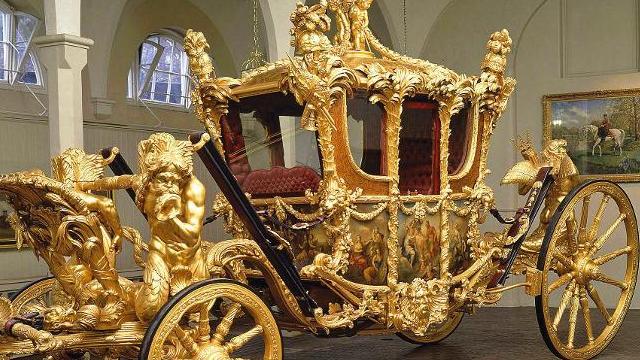
Of a different class altogether are the ‘ state horses,’ which appear only on procession days, and are as much a part of the pageantry of royalty as the crown and sceptre, and other working tools of that degree. These have a stable to themselves, the ‘creams’ on one side, the ‘blacks’ on the other. The creams, like the dynasty, are of Hanoverian origin, but they have for generations been of British birth, and, like a large number of the royal horses, first breathed fresh air in the paddocks of Hampton Court. In popular superstition they represent the white horse of Hanover; but that peculiar strain died out long ago, except heraldically, and the creams were always distinct from it. Another erroneous notion, fostered, perhaps, for advertisement purposes, is that the state creams are ‘cast’ and find their way into circuses; but the only specimens that are ever allowed to quit the palaces go as geldings to the band of the Life Guards. With that one exception, the creams come to London when three years old, and live and are buried in the service in which they are born. Being either entire horses or mares, they require a good deal of attention; they are never left alone by day or night; and the man in charge, who has the highest post in his department, sleeps in the stable, and claims to have the longest day’s work in the employment of the State.
Opposite to them are the blacks, which though, perhaps, not so graceful, are more serviceable-looking. They also are of Hanoverian origin, being essentially well-bred specimens of the better class of hearse horse, now rare amongst us owing to the preference given by our undertakers to the more sympathetically lugubrious —and cheaper—Flemish breed. They are big, splendidly showy horses, ‘ with a power of pride in them.’
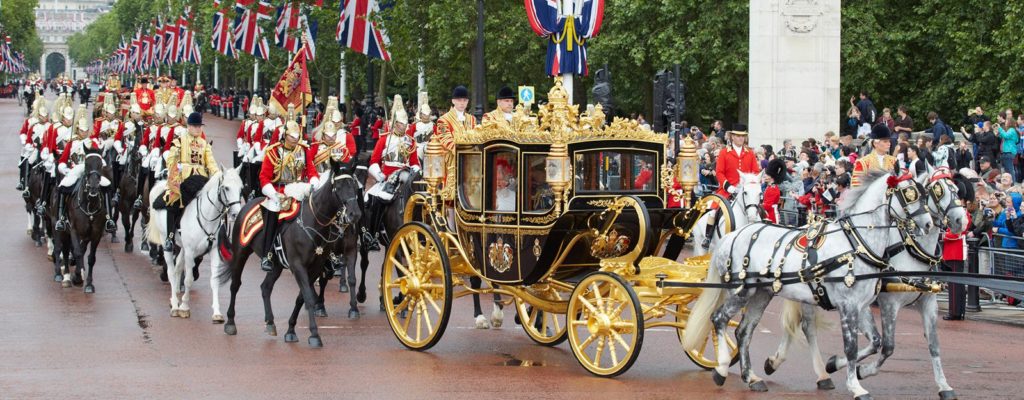
Like the creams, they never appear on duty with unplaited manes, the blacks being decked with crimson ribbons, the creams with purple. A trifling matter this of plaiting the manes, but on trifles oft a crown doth hang. Once only did the state creams go forth unplaited. It was in 1831, when Earl Grey and Lord Brougham waited upon William IV. to recommend the immediate dissolution of the Parliament, which was playing havoc with the first Reform Bill. The scruples of the King at dissolving so young a Parliament had all been overcome, and he announced his intention of starting for the Houses forthwith, when it was pointed out that there would be no time to plait the horses’ manes. ‘Plait the manes!’ said his Sailor Majesty, then ‘—with the loudest and, of course, most dignified of expletives—’ I’ll go in a hackney coach!’ Horror of horrors! the King on such a mission in a hackney coach! And so the manes were left unplaited, and the State was saved.
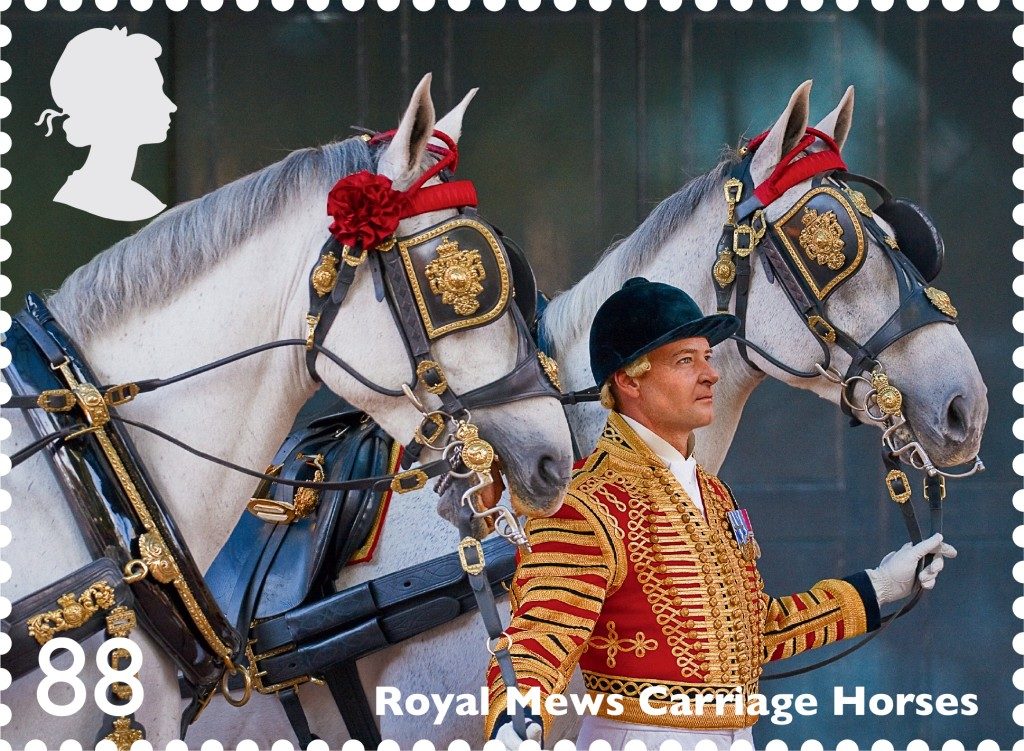
But the unplaitedness disturbed many courtly minds, and Mr. Roberts, the King’s coachman, above all men, was most indignant. And so it happened that a still more terrible thing took place. The horses had not been out for some time, and being harnessed in a hurry, they were, like their coachman, not in the placidest of tempers. As they passed the colour party of the Guards, the ensign, in the usual way, saluted. The creams took fright at the flash of colour, and broke into a trot. The great Mr. Roberts began to curse the soldiers loudly, and tried to check the horses in vain. On went the coach briskly. ‘It was noticed,’ say the contemporary historians,’ that his Majesty proceeded at a faster rate than usual, in his eagerness to carry out the wishes of his people,’ and, in short, he reached the Houses considerably before his time. All went smoothly enough inside, but outside there was anything but smoothness. The indignant colour-bearers appealed to their superior officers, and Mr. Roberts had to descend in double quick time from his exalted perch and humbly beg pardon for his insult to the outraged Guards. ‘Swear at the King’s colour, sir! Apologise instantly!’ And he did. And if he had not done so, it is more than probable that the King would have had to have called that historical hackney coach for the return journey, while the unplaited team went home, certainly Robertsless, if not coachmanless.

Neither the creams nor the blacks have had much to do of late years. Though they are the leaders of the London horse-world, their appearances are few; but they can be occasionally found taking their exercise in pairs. The work of all the royal horses is necessarily irregular, as, though a few may be sent to Windsor, the bulk are kept continuously in London, and when the Court is away their occupation is mostly mere exercise. But when the Court is in town they have quite enough to do, work in the stables beginning at five o’clock in the morning, and sometimes, as when the German Emperor was at the palace, there is no rest until half-past two next morning. The routine is conducted with much more precision than in a private stable. Great care is taken that every turn-out is as it should be, and at every public function the carriages are paraded and inspected in the quadrangle before they are allowed to leave the stable gates.
On our 2005 England trip, my hotel room looked out onto that entrance to the stables. I had a new camera and inadvertently made a short video of the horses being ridden out the gate. Now I treasure it and the memories it evokes!
(i think that was the day we saw Prince Charles, Kristine!)
The day we saw Prince Charles . . . sigh. I will never forget that day.
Oh you two lucky, girls! Royal horse videos AND Prince Charles.
This entire series has been one of the best I have ever read. It brings back fond memories of my horse mad days in England and early morning rides in the fog.
Louisa – I'm so glad you enjoyed it! Great tidbits of info, no?